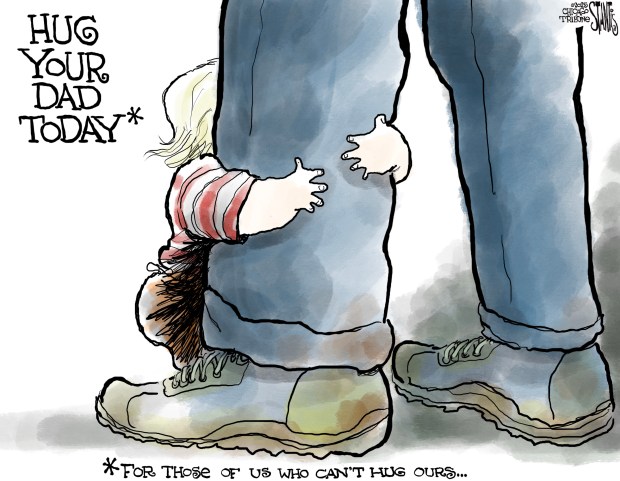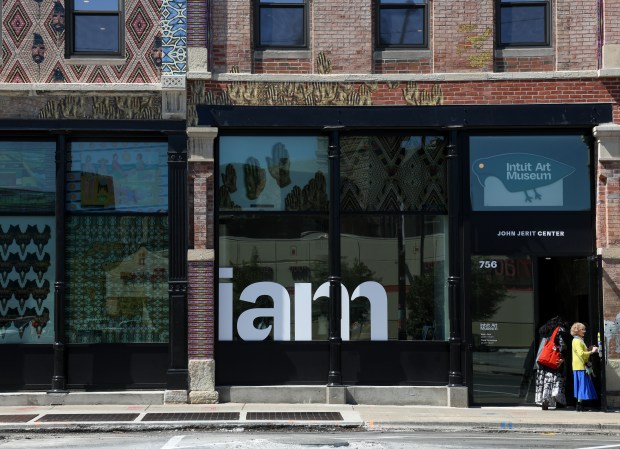Gun violence was the top issue for Chicago voters in the most recent mayoral election. It’s no wonder. What Chicagoan looks at a victim such as 7-year-old Jaslyn Adams, shot to death at a McDonald’s drive-thru on the West Side, and doesn’t see their own kid, grandkid, or sister?
The city has responded by releasing the People’s Plan for Community Safety, a key centerpiece of which is new investments of reportedly $100 million for community violence intervention (CVI) programs. That’s a great start, but a 0.4% increase — four-tenths of 1% — in the city budget is not nearly enough to move the needle on gun violence in Chicago. The only realistic solution is to figure out how to get much more social good from what the city is already spending.
Here’s one way to see the scale of what’s needed.
Gun violence — how much of it we should expect to have and who’s most likely to be involved — is predictable to some degree. Just look at where gun violence is disproportionately concentrated in Chicago: not downtown or on the North Side. Year after year, it’s concentrated in the same economically disadvantaged, racially segregated, socially isolated neighborhoods on the South and West sides.
Within those areas, a vast majority of people are just focused on going to work and raising their kids. But there is also a modest share of people who are at high risk — and a small share at very high risk — of being involved in a shooting. And there’s a regular cadence to people’s life trajectories that leads them to face such risk: It starts with low-level crimes in the early teen years that for some then escalates. Most homicide victims and offenders have spent time in the criminal justice system.
This is to say we can make a decent educated guess about how many people are at what sort of risk for gun violence by looking at how many people are living in underresourced neighborhoods and their levels of prior criminal justice involvement.
Several “alumni” — Sara Heller, Ben Jakubowski, Zubin Jelveh and Max Kapustin — from the research center I help run, the University of Chicago Crime Lab, carried out exactly this type of forecasting exercise. They assembled 20 years’ worth of data from Chicago, which they then use to predict how many people, and who, will be shot in the next 18 months.
They find that even a small group of people at highest predicted risk — just over 4,000 people, or just under 0.2% of the city’s total population — are at very high risk of being shot or killed. Over the next 18 months, this small group will be involved in more than 1 of every 10 shootings in Chicago.
What would it take to keep this group safe? Consider the following illustrative calculation. There aren’t many CVI programs that have been studied using the sort of methods the Food and Drug Administration requires in medicine, where lives are also at stake, but there are a few. A recent study by the Crime Lab, Inclusive Economy Lab and researchers at the University of Michigan (Heller) and Cornell University (Kapustin), looked at the effects of one promising CVI program: READI Chicago.
While the data is a bit noisier than one would ideally like, it suggests that READI reduced the number of times that some participants were arrested for or became victims of shootings and homicides by around 60%. If the cost per participant is about $60,000 (what it was in the READI study itself), then serving 4,000 people would cost $240 million. The best-case result would be 6% fewer shootings in Chicago.
How much further could we go? Consider that each additional dollar spent will likely produce less benefit than the dollar before it, for two reasons. First, as CVI programs scale, they have a harder time hiring the highly qualified staff members they need and so tend to become less effective as a result. Second, CVI programs will likely prioritize serving the people with the highest needs (and who are facing the highest risk) first; as more people are served, newer participants will probably face a lower average risk than earlier ones.
Even if we assume the best case that READI will remain just as effective as it grows, by my calculations to reduce shootings in Chicago by 30%, it would need to serve 50,000 people at a cost of $3 billion. Reducing shootings by 36% would cost twice as much ($6 billion).
Notice also that the dollars we’re talking about quickly get to be a pretty big share of Chicago’s total budget (city plus Chicago Public Schools) of around $26 billion. And even if — a big “if” — the city could somehow come up with an extra $6 billion, that would close less than half of the widely noted safety gap between Chicago and New York City.
To me, the lesson here is that more spending — as helpful and important as that is — almost surely won’t be enough by itself. Given the city’s budget challenges, any new funding is more likely to start with an “m” (as in millions) than with a “b” (as in billions).
This would seem to leave us just two options.
The first option is to learn to live with our current level of gun violence. We learn to tolerate a public health crisis that’s unknown in any other rich country in the world, a public health crisis that is profoundly regressive in its effects, that harms our most economically and socially vulnerable communities of color the most.
The second option is to figure out how to get more social good out of what the city is already spending every year on social programs, public schools, infrastructure, economic development, police, etc. The way to do that is boring but vitally important: using data to manage operations and ensuring that the best people are hired and promoted (and well-trained) and that policies and programs are selected based at least in part on what actually works. A friend of mine who worked in City Hall in New York said the main thing she learned was “at the city level, it’s all about operations.”
That’s basically the New York story. In 1991, the homicide rates in Chicago and New York were almost identical. Total city spending over the next 30 years increased at about the same rate in both places. Yet the homicide rate in New York today is about one-quarter of ours.
We should be under no illusions that this would be easy to do here in Chicago. We’re an exceptionally small-“p” political city; every dollar we currently spend has a constituency behind it. The fact that we’re also regularly No. 1 in the country in terms of federal corruption indictments surely doesn’t help.
There is, unfortunately, no magical third option here. And the clock is ticking for us to figure out what sort of city we want to be: Summer is coming, and the eyes of the world during the Democratic National Convention will be on the choice we make.
Jens Ludwig is the Edwin A. and Betty L. Bergman distinguished service professor at the University of Chicago and the Pritzker director of the university’s Crime Lab.
Submit a letter, of no more than 400 words, to the editor here or email letters@chicagotribune.com.




